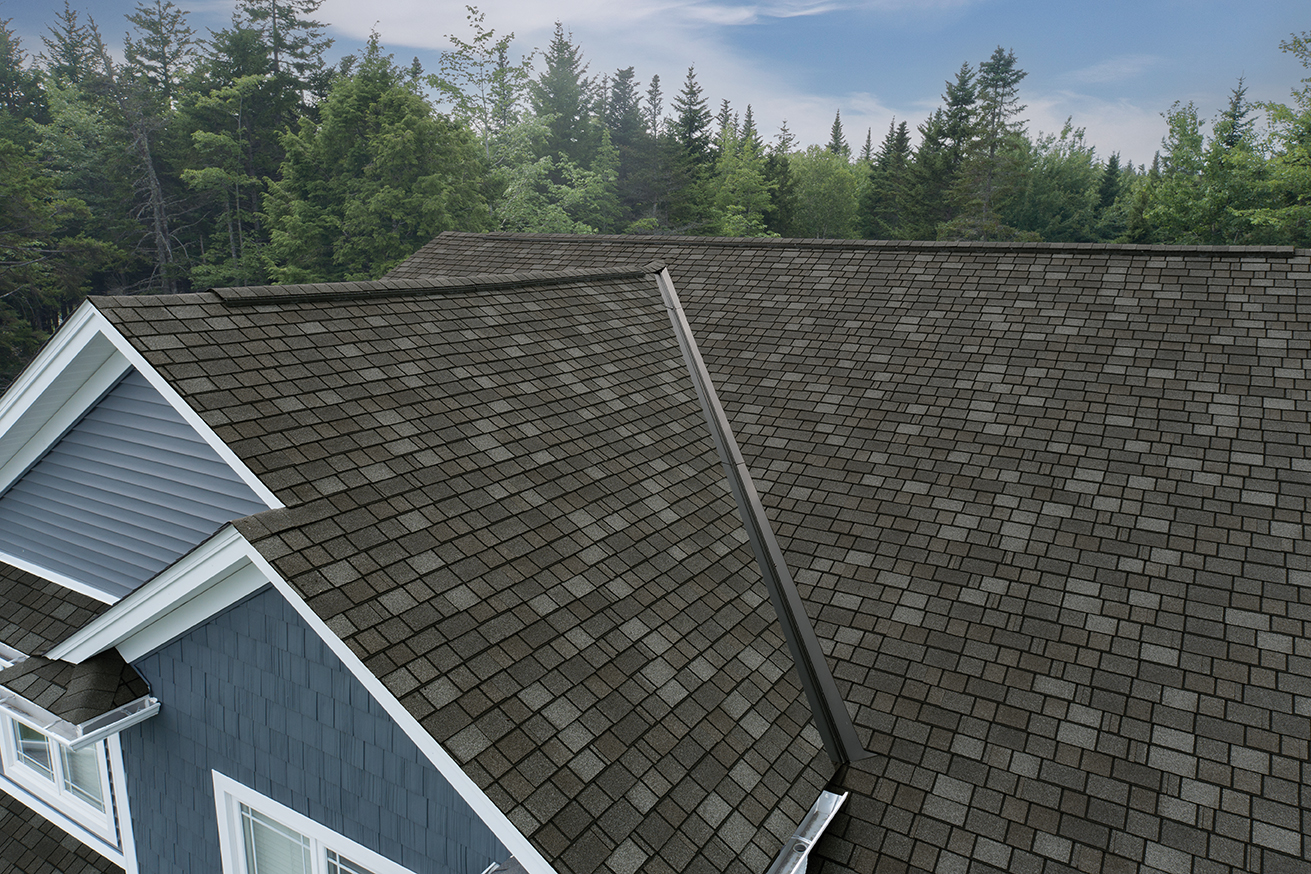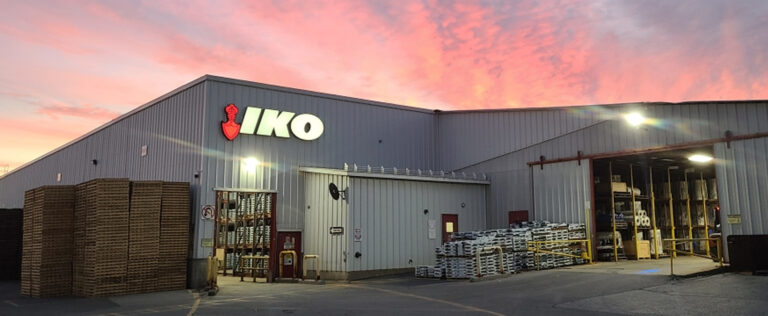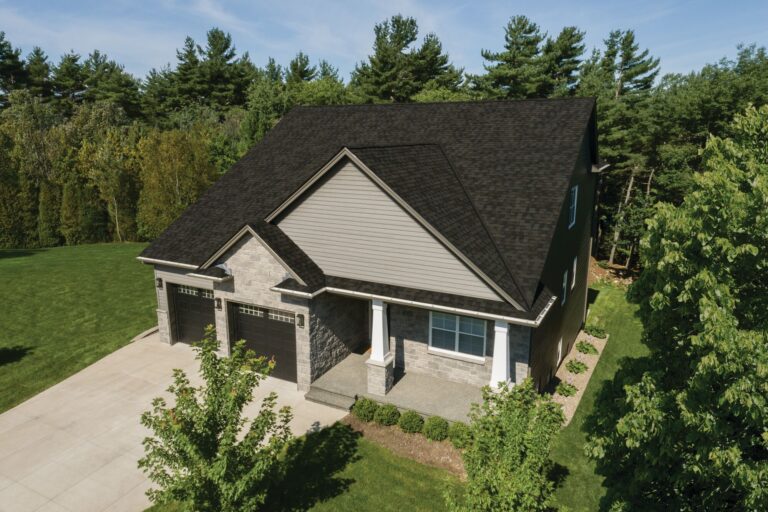The Evolution of Roofing Materials: These Are Not Your Father’s Shingles
The roof is a crucial element of any home, providing protection from the elements and contributing to its overall aesthetic appeal. Over the years, residential roofing shingles have undergone a remarkable evolution, transitioning from traditional materials to cutting-edge technology. In this article, we’ll explore the journey of roofing shingles and trace their development from simple, time-honored materials to the innovative options available today.
Traditional Materials: A Solid Foundation
Historically, roofing shingles were designed in individual square or rectangular geometry and crafted from natural materials, such as wood, slate and clay. These materials provided durability and a classic aesthetic but had their limitations. Wood shingles were susceptible to rot and fire, while slate and clay were heavy materials often requiring additional structural support for roofs and significant resources for processing and transportation.

The Introduction of Asphalt Shingles: A Step Forward
The early to mid-20th century saw a significant shift with the introduction of asphalt shingles. These shingles featured asphalt applied over an organic material base and gained popularity due to their affordability, ease of installation and improved durability. The 3-tab design with self-sealing technology was introduced in the 1960s to eliminate the need to manually seal each shingle. Organic asphalt shingles used an organic mat manufactured from cellulose, which was then saturated by asphalt to make it waterproof. They were then top-coated with adhesive asphalt and embedded with ceramic granules.
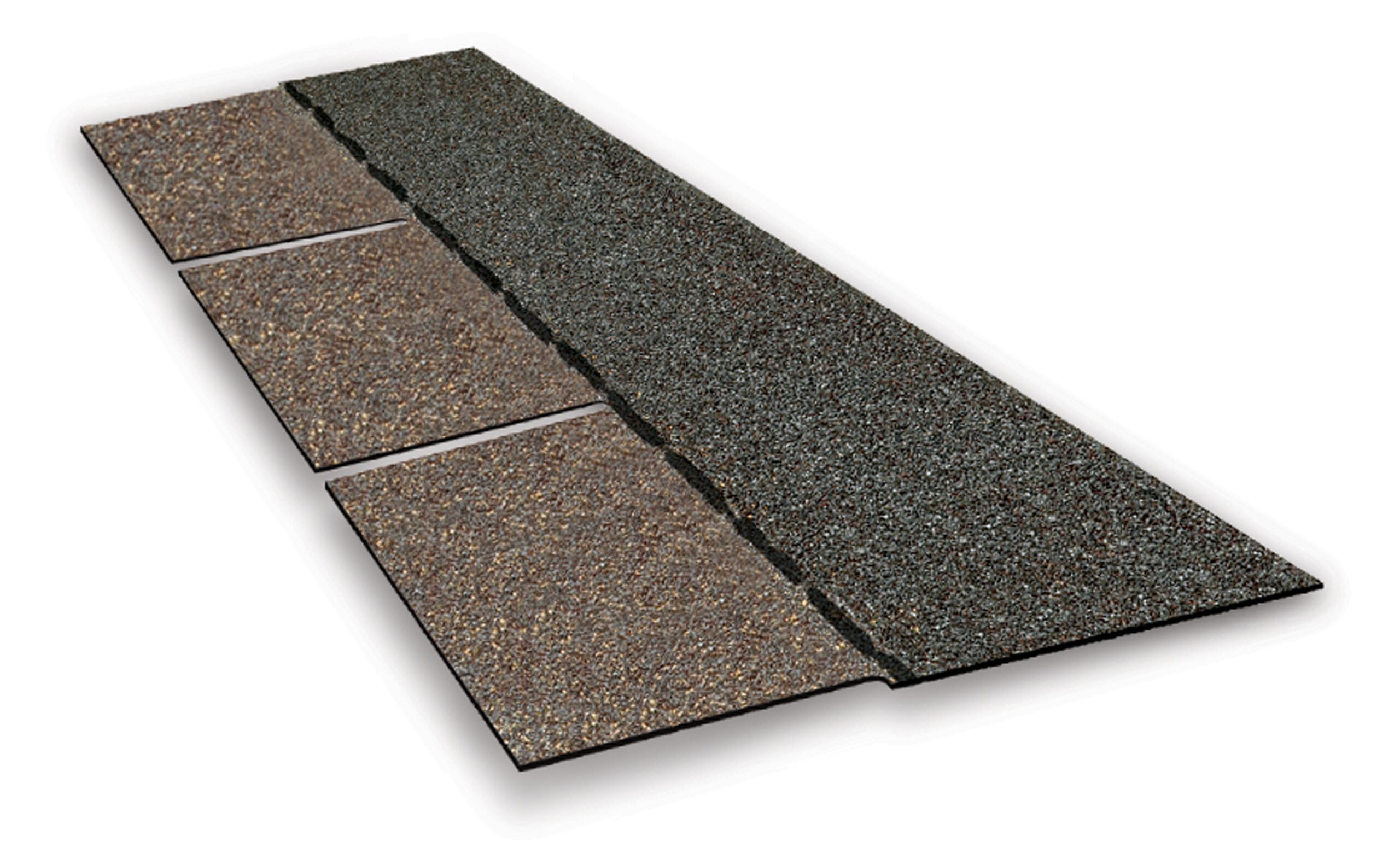
Architectural Shingles: The Rise of Aesthetics
As consumer preferences shifted towards more diverse and visually appealing options, architectural shingles entered the scene during the 1970s. Laminated (multilayered) designs create a textured appearance as they are installed in overlapping rows or courses that create shadows to add depth and enhance architectural appeal. These shingles were often designed to mimic the appearance of wood, slate or other building materials and offered a blend of aesthetics and durability, providing homeowners with a wide range of choices.
Fiberglass Reinforcement: Strengthening the Foundation
By the early 1980s, asphalt roofing shingle design took a significant leap forward with the introduction of fiberglass reinforcement mats impregnated with stabilized waterproofing bitumen. Fiberglass roof shingles became a popular choice for their strength, plus their resistance to fire and other environmental elements. Fiberglass shingles also typically use less asphalt than organic shingles, so they provide outstanding weather protection at a reduced weight. These advantages moved the market to fiberglass reinforcement, and manufacturers phased out production of organic asphalt shingles between 2000 and 2012.
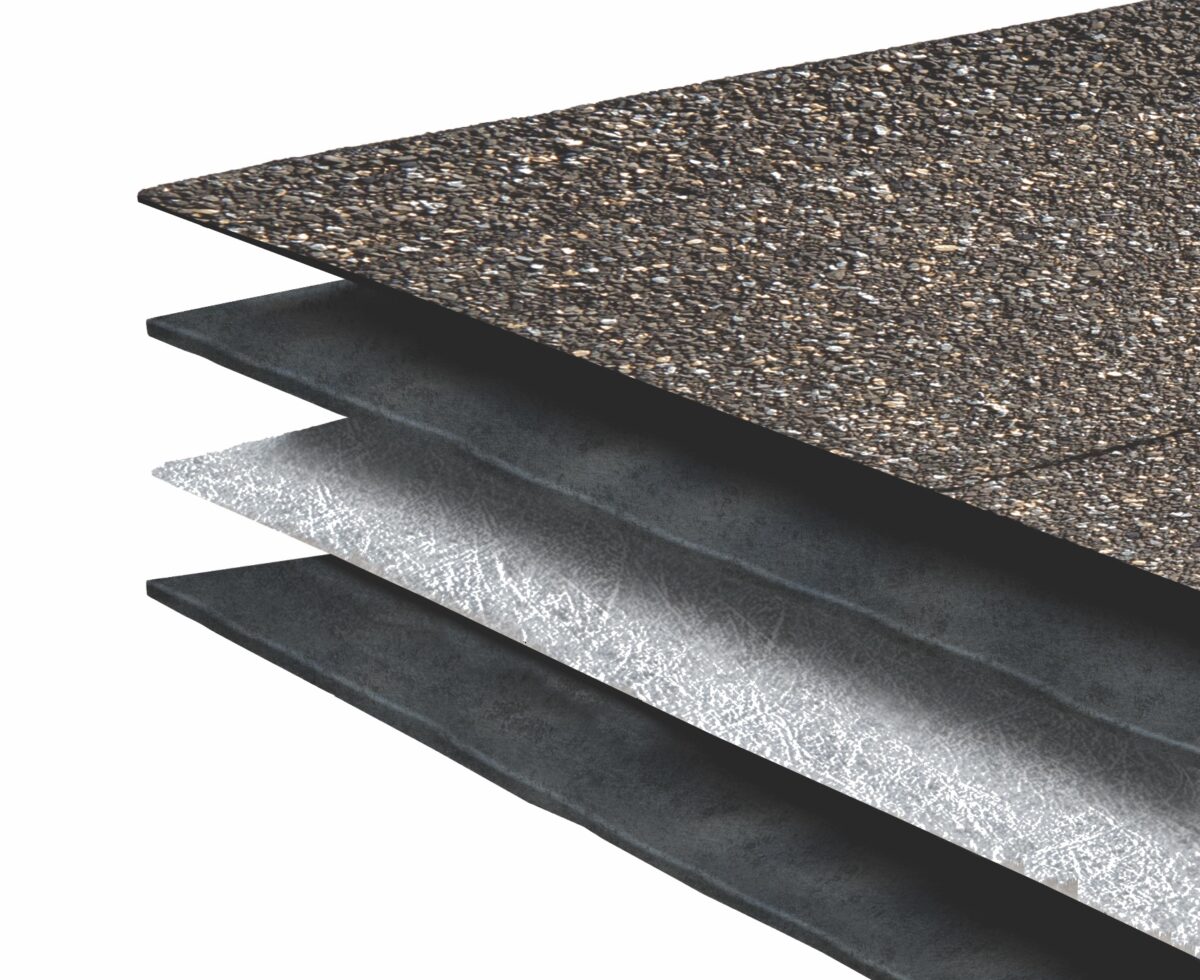
Material Science: Continuous Improvement in Asphalt Roofing Products
Polymer-modified asphalt became a widely used roofing product in the 1990s, allowing increased impact resistance. Impact resistance becomes increasingly important under severe weather conditions. When objects (such as hail) impact a roof, they can break the shingles, causing the shingles to crack and making the roof more vulnerable to water intrusion. Also, impact on the shingles may cause them to lose granules off the top layer, leaving the shingles exposed and vulnerable to ultraviolet rays or potential weather damage. Polymer-modified asphalt is softer and more resilient than standard oxidized asphalt, and it acts like a shock absorber to help withstand impact. Class 4 products have the highest impact resistance available on the market, as determined by independent testing and certification organizations.
Advances in thermally activated sealant technology during this time yielded shingles that provided faster sealant activation after installation and greater uplift resistance during high-wind events. The 1990s also saw advancements in algae resistance by embedding asphalt with copper-infused, blue-green algae-resistant granules that help prevent black streaks or discoloration that blue-green algae colonies can cause in humid climates.
Engineering Advancements: Pulling It All Together
The period between 2010 and 2015 saw the introduction of the Performance category of asphalt roofing shingles. For IKO, the Dynasty and Nordic Performance product lines are engineered with premium features, like the ArmourZone 1 ¼-inch reinforced nailing area, Class 3 and Class 4 Impact Resistance, and high-definition color blends.
Homeowners can have peace of mind knowing that when extreme weather comes their way, IKO roof shingles have been thoroughly laboratory-tested and have successfully performed in some of the planet’s harshest climate regions, including hurricane zones, tropical rainforests, desert extremes and the freezing sub-Arctic.
The evolution of roofing shingles reflects steady advancements in technology and material science. From traditional materials to organic asphalt products and now modern architectural designs, roofing shingles have come a long way over the years. Innovation continually drives the industry forward, allowing homeowners to choose from a diverse array of asphalt roofing shingles that balance performance, aesthetics, and sustainability. Stay tuned to see what’s next!
